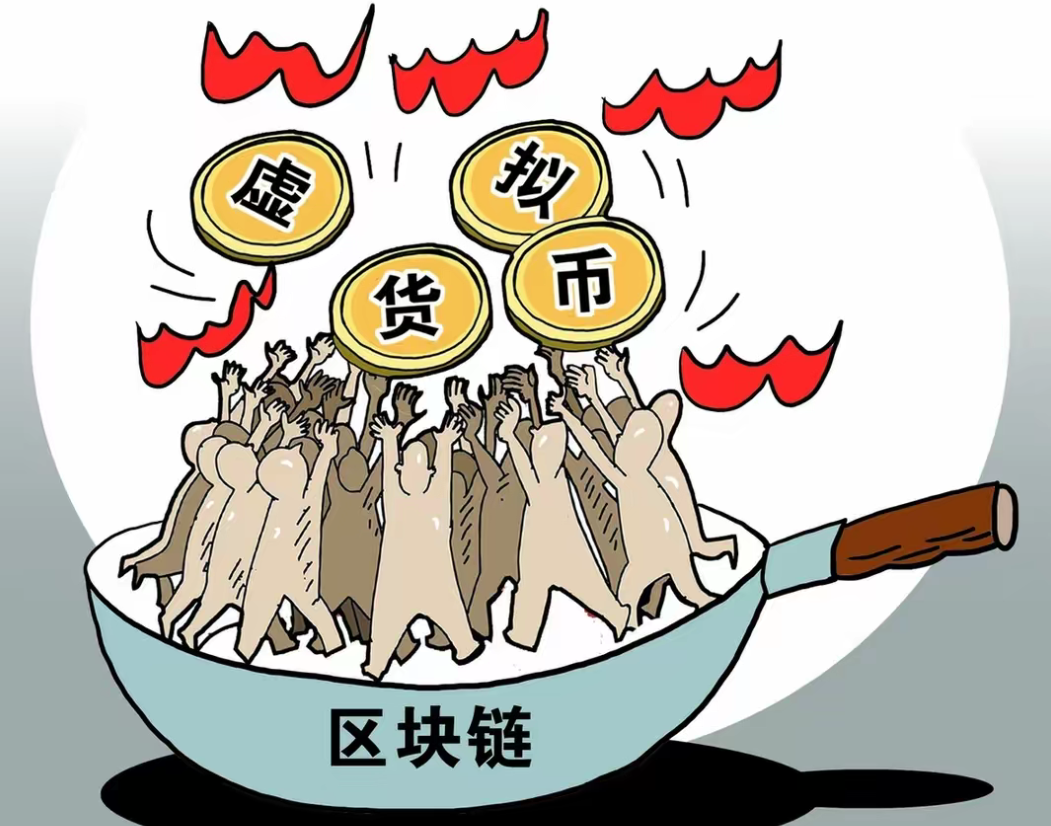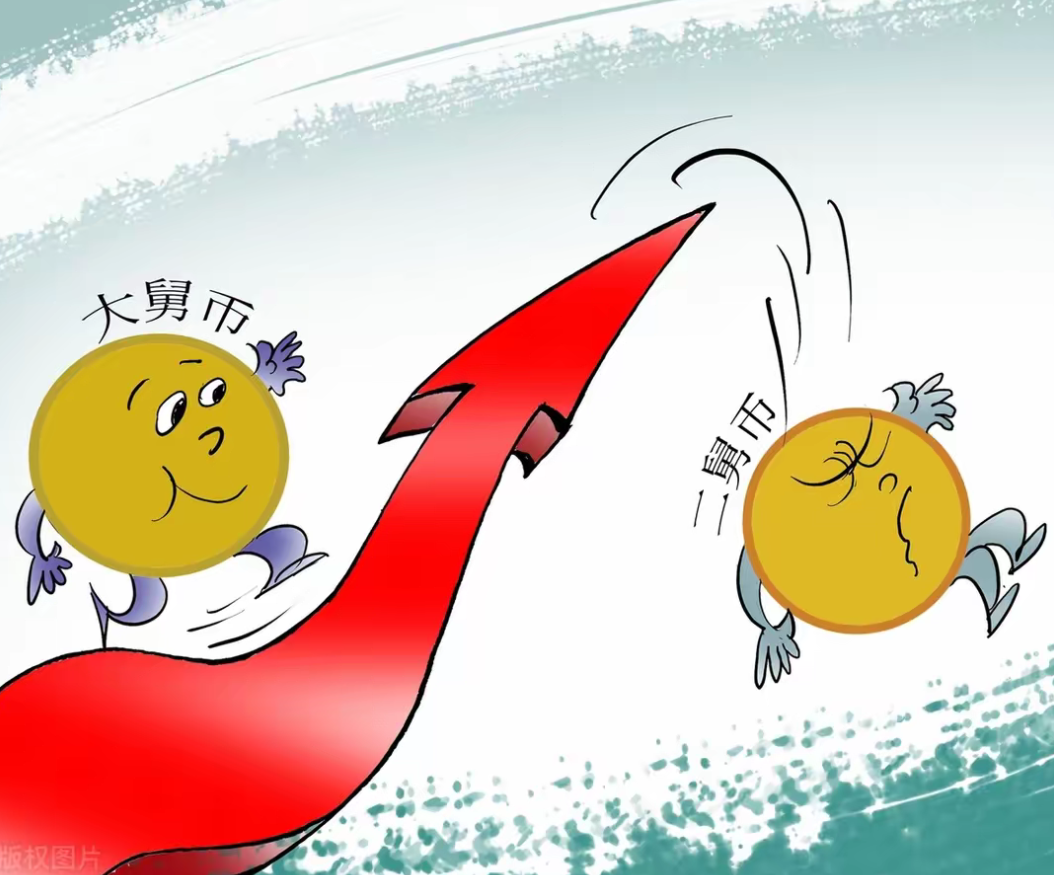1. What are air coins?
Air coins are digital currencies that lack technical support, project implementation, and actual value, just like air itself. For example, newly minted pyramid scheme virtual currencies claiming to be 'national currency', calculated using 'Tianhe-2', and providing virtual digital currency appreciation services as a front, as well as various currencies that use blockchain technology as a gimmick but have no practical implementation.

Common air coins include 'Global Wealth Panda Gold Coin', an investment platform founded by Sun Moubao. This platform uses the guise of providing virtual digital currency appreciation services, establishing different investment levels, reward methods, and withdrawal regulations to conduct online pyramid schemes. New members are required to pay an entry fee of 168 yuan, and members are categorized into 8 levels such as 'Student Level', 'Expert Level', 'Supreme Director', 'Gold Diamond Director', etc., investing or developing subordinates according to certain ratios. The platform claims that 'Panda Gold Coin' is 'National Currency', computed by the 'Tianhe-2' computer system, predicting that within 5 years, one piece of Panda Gold Coin may exceed 10,000 yuan, but in reality, the price fluctuations of 'Panda Gold Coin' are controlled by Sun Moubao and others behind the scenes. In just a few years, this platform recruited nearly 2,000 members nationwide, with a total involved amount exceeding 200 million yuan.
In addition to typical air coins like 'Panda Gold Coin', there are many similar currencies in the market. For example, coins that use blockchain technology as a gimmick but have no practical implementation, and various funding schemes masquerading as 'virtual currency mining'. These projects often falsely package team members, using industry celebrities for promotion, misleading investors. For instance, air coin Vpay has a claim that the founder published a cryptography report in the US (Time) magazine and received the US IEEE 'Outstanding Technical Achievement Award', which non-professionals cannot discern, but knowledgeable individuals can spot the joke immediately. (Time) magazine does not belong to an academic journal and would not publish cryptography reports; the US IEEE is also a bogus institution with no academic authority. Last year, typical air coins like Hero Chain and Space Chain pulled in some well-known celebrities for their platforms. Therefore, in the blockchain field, one must be especially wary of the temptation of celebrity endorsements.
Additionally, there are some so-called 'public chain gimmick' projects that are essentially set up to harvest investors. For example, 'Obey Chain OBC', although it claims to be based on blockchain technology to develop an anonymous chat app, is actually a scam using advanced technology to package a fictitious fund scheme, luring investors into so-called 'virtual currency mining' investments. Participants can receive a 'Zeus entry advertising mining machine' for free by completing real-name authentication and mine the platform's token OBC. The more users contribute to the platform, the more OBC token rewards they can earn. However, here the OBC token is not recognized by mainstream markets, and its value is entirely controlled by the project party, essentially making it an 'air coin'.
A project that only issues coins without developing any actual blockchain projects indicates it is likely an air coin. Characteristics of air coins also include promises of high returns, unclear project attributes, issuance methods relying on recruitment to develop multi-level subordinates, guaranteed profits, restricted trading methods, and collusion with dubious exchanges. In short, investors must be vigilant when dealing with digital currency investments, carefully discern air coins, and avoid falling into investment traps.
2. Characteristics of air coins
(1) Regarding the white paper

1. No white paper or a rough white paper, some are even translated jumbles or purchased from dubious sources. Many air coin projects have not taken the time to write a white paper thoughtfully or have simply translated or pieced together a white paper, or even purchased it from some unofficial sources. Such white papers often lack substantial content and cannot provide investors with a clear plan and technical solutions for the project.
2. The white paper does not address commercial needs, is hollow and superficial, only discussing broad principles. The white papers of air coins often just talk about blockchain concepts and trends in general without specifically detailing how the project meets actual commercial needs. White papers full of broad principles fail to help investors understand the feasibility and value of the project.
3. Creating 'pseudo' commercial needs that do not hold up to scrutiny. Some air coin projects deliberately create seemingly high-end but fundamentally unachievable commercial needs to attract investors. These pseudo-needs reveal flaws upon careful analysis and cannot support the project's long-term development.
False packaging of team members, such as air coin Vpay falsely presenting its founder. Like air coin Vpay, many air coin projects will provide false introductions about their founders. For example, claiming the founder published a cryptography report in the US (Time) magazine and received the US IEEE 'Outstanding Technical Achievement Award', which non-professionals cannot discern, but knowledgeable individuals can spot the joke immediately. (Time) magazine does not belong to an academic journal and would not publish cryptography reports; the US IEEE is also a bogus institution with no academic authority.
Using industry celebrities for promotion creates a significant illusion. Air coin projects often use industry celebrities for promotion; last year, typical air coins like Hero Chain and Space Chain engaged certain well-known celebrities. This creates a false impression of trustworthiness for the project to investors, but in reality, these celebrity endorsements do not guarantee the authenticity and feasibility of the project.
Promises of high returns, claiming profits can reach hundreds of times or even humbly stating they cannot reach millions of times like Bitcoin. Air coin projects typically promise high returns, some projects even 'humbly' state they cannot reach millions of times like Bitcoin, but hundreds of times is quite easy. Such promises of high returns can easily stimulate investors' excitement, but in reality, they are often unattainable.
Project attributes are unclear, unable to query total currency issuance, circulation, and transfer transaction records, using a centralized accounting method, allowing unlimited issuance of coins. The project attributes of air coins are often unclear, and investors cannot access the total amount issued, circulation, and transfer transaction records of the currency. These projects likely use a centralized accounting method, allowing unlimited issuance of coins, lacking transparency and credibility.
The issuance method mainly involves recruiting people and developing multi-level subordinates to obtain reward tokens, etc. Air coins mainly issue reward tokens through recruiting people and developing multi-level subordinates, or through charging different membership levels to purchase different levels of virtual mining rights, etc. This issuance method is similar to pyramid schemes and poses significant risks.
Promoting that the coin price only rises or that holding a certain amount of tokens can earn regular dividends. Air coin projects will deliberately promote promises that the coin price only rises or that holding a certain amount of tokens can earn regular dividends. However, the digital currency market is inherently chaotic, and price fluctuations are unpredictable, making such promises likely false.
Why can air coins scam investors?

The fundamental reason why air coins can scam investors lies in the myth created by Bitcoin, which brainwashes the public intensively, combined with various promotional methods that cause investors to lose their discernment.
Bitcoin surged from less than 1 cent in January 2009 to nearly 20,000 dollars in 2017, with increases surpassing any investment product we know. All air coins invariably cite this example, making it difficult for investors to resist such a compelling reality, thus falling into the trap of air coins.
Moreover, air coins employ various promotional methods. For instance, Pi coin claims it can be mined using a mobile phone without consuming electricity or data, requiring only a daily click to mine Pi coins. The global active miners of Pi coin exceed 18 million, and the price in foreign barter consensus is approximately 100 dollars per Pi coin. However, in reality, mobile 'mining' is challenging to achieve genuine cryptographic security, its underlying algorithm is simple, market value is low, and it is easily hackable or decodable, lacking credibility in the currency circle. The Pi coin project's profit comes from advertising income, with ambiguous attitudes toward the mainnet launch time and exchange listing time, enticing investors to contribute traffic through daily mining, resembling a 'daily sign-in for points' model.
In summary, air coins use various methods to scam investors; when facing digital currency investments, investors must be vigilant, carefully discern air coins, and avoid falling into investment traps.
The dangers of air coins
1. Investors may face the risk of being unable to recover their principal, as a certain investor in Jinan, Shandong, was unable to recover their principal after investing in a digital currency project, and the court did not support their claim.
A case published by the official WeChat account of the Shandong High Court shows that an investor in Jinan, Ma, invested 70,000 yuan in a domestic digital currency project through introductions from Liu, Chang, and Li, and signed an investment agreement. However, after relevant notifications were issued, the project trading software became inaccessible, resulting in Ma being unable to recover their principal. The local courts in Jinan subsequently did not support the plaintiff's claims, ruling that the plaintiff's act of commissioning the defendant to help purchase virtual currencies is not protected by law in China, and the agreement signed under the commission relationship is also not protected by Chinese law; the consequences of the plaintiff's purchase of virtual currencies should be borne by themselves.
2. Potential involvement in pyramid scheme tactics, such as the Pi coin expansion model being highly similar to a pyramid scheme, requiring 'recruitment' to develop subordinates, where higher-ups profit from lower levels.
The Pi coin claims it can be mined using a mobile phone, without consuming electricity or data, allowing users to mine Pi coins by simply clicking once a day. Its expansion model is highly similar to a pyramid scheme; determining whether it is a pyramid scheme relies on two characteristics: first, whether there is an entry fee or requires monetary investment; second, whether it requires 'recruitment' to develop subordinates, and whether profits from the upper levels come from the lower levels, exceeding two levels of profit hierarchy. Pi coin does not require any monetary investment, but can make money through hierarchical relationships; as the price of Pi coins rises, organizers can cash out the coins in hand.
3. There is a risk of being 'scammed'; project parties may deceive investors through false advertising and manipulation of coin values.



